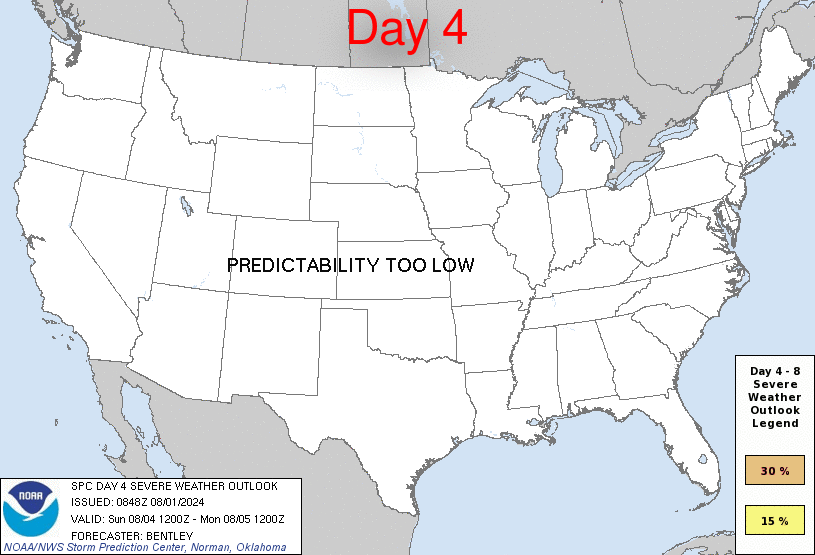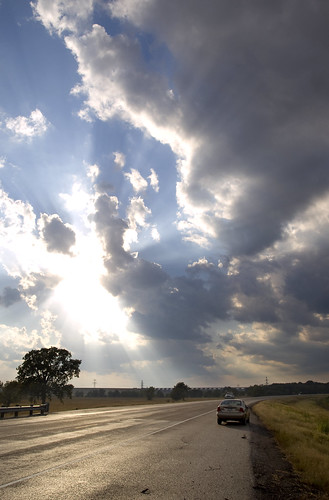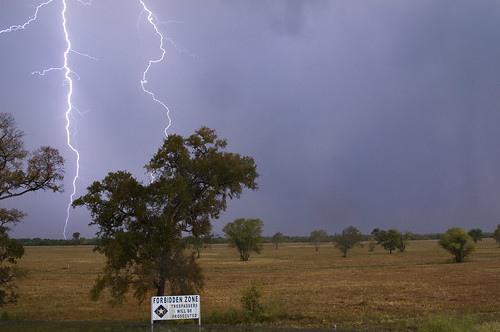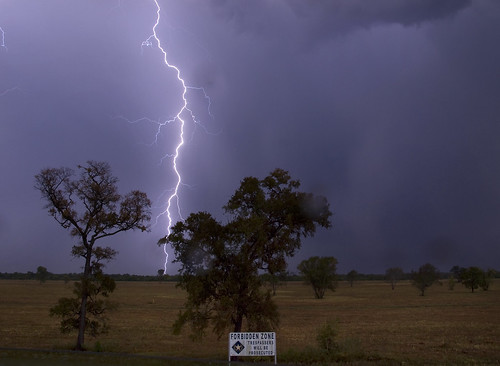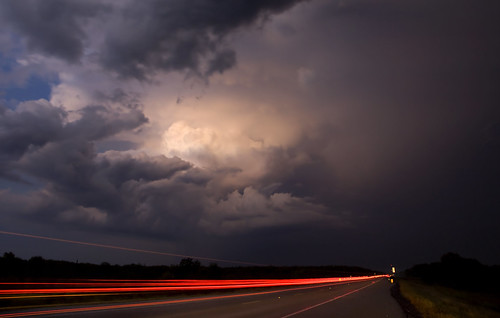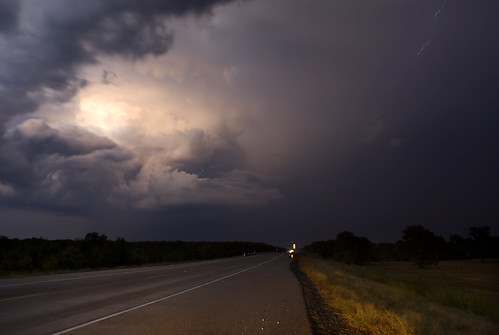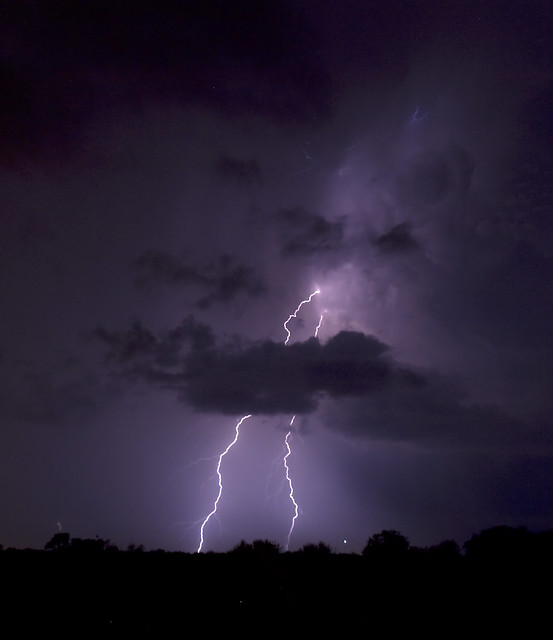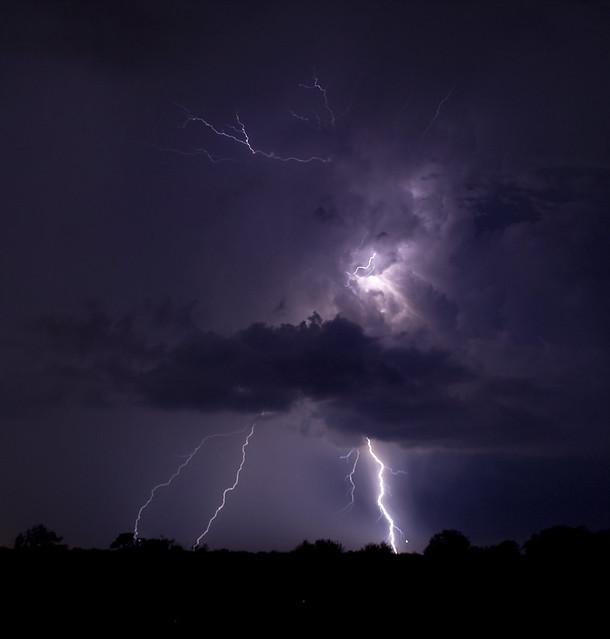It was an honor to be able to go out on a storm chase with such talented people.
Since Instability was somewhat low (CAPE value around 1,000) storms were not the most spectacular ever seen but they showed definite signs of Supercellular characteristics and decent mid level rotation. It was also fascinating to watch wall clouds form, spin up, and die. There were a few impressive downbursts witnessed as well, especially when a cell would begin to collapse as it entered more stable air.
As is often the case with any severe weather events I have chased nothing is certain until a few hours before. And that was more or less true this day. Originally I had a target of Vernon Texas with the expectation that the Dry Line would set up near Childress. However by noon on Friday SPC moved the greater chance for severe weather further east and south given an outflow boundary that had set itself up west of Wichita Falls from the early morning convection across West Texas and Oklahoma. In addition a warm front seemed to become evident in the early afternoon trying to cross the Red River. To the south of the warm front surface based CAPE increased from zilch to at or over 1000 J/kg.
This was a welcome change since it put the target area closer to Wichita Falls and home. We headed out around 1:30 - 1:45 pm and arrived in Wichita Falls where we met up with Ben around 4:00 pm. Supercells had already fired along the outflow boundary near Seymour Texas and were moving to the northeast towards Wichita Falls. All we had to do was jump on highway 277 and that would take us right to the storms.
The warm front basically set itself up along highway 287 and as the first supercell began to approach the warm front the rotation in it tightened a bit given the backed surface winds along the warm front. However at the same time it began to lose surface based instability quite rapidly as it encountered the cooler air.
When I saw the northern cell develop a decent looking hook I made the call to take Highway 25 to the north to catch it near Electra with the expectation that it would turn right as it encountered the warm front and the better shear along it. However... that probably is more likely to happen if the atmosphere north of the warm front is decently unstable as well as to the south. Since temperatures dropped into the lower 70's to 60's north of the front the instability was quite low and the storm began to shrivel up... So, we turned around and got back on 277 to try and intercept the 2nd supercell coming up from near Seymour.
This storm also developed decent rotation as it came north near the warm front and also intensified quite a bit. When we got to Highway 183 we took that north and were able to see a pretty well developed wall cloud. By the time I started photographing the storm the wall cloud had become shallow to non-existent... but the storm still showed great structure and mid-level rotation.

It was also pretty neat to watch the strong downburts as the storm moved off to our north.
It was bout this time that the TIV II made its appearance (of which I never got a good picture). We were kind of shocked to see the TIV II out during late October.

We decided not to pursue the supercell as it continued its motion to the northeast since it had crossed 183 and was beginning to significantly weaken due to the more stable air to the north. Our attention then turned to cells to the south which at first seemed pretty disorganized.
However as the next cell approached it quickly began to show sings of having a mesocyclone and even formed a decent wall cloud (though it only had very weak rotation).

This storm was suffering from the cooler air set down by the previous storm which prevented it from getting very intense. But the wall cloud still looked good.

This storm also passed us to the west and continued off to the north east where it fell apart. But there was still a cluster of cells to the southwest and one of them as it approached quickly intensified. We went back south on 183 to get on 277 since this cell would be further east than the previous three cells.


This storm had some great rotation at the mid-levels and even developed several areas of rotation under the base... a little disorganized but intense. The rising motion in the wall clouds looked insane from as close as we were.



By this point 277 had become packed with chasers. The TIV II also made a second (or third) appearance and I again failed to get a decent picture of it due to long shutter speeds.


We took 277 back to the northeast towards Wichita Falls and continued to watch this beautiful storm as it also began to ingest the more stable air to the north and become more elevated.

Pretty good down burst showing up on this one.

Not sure exactly where we ended the chase but it was basically along a small road north of 277 trying to capture lightning from this cell as it moved off to the northeast.

After the last cell moved off to the northeast we called it quits for the evening, said good bye to Ben, then headed into Wichita Falls to begin the trip home.
All in all it was quite an amazing chase... especially given that it was October.

